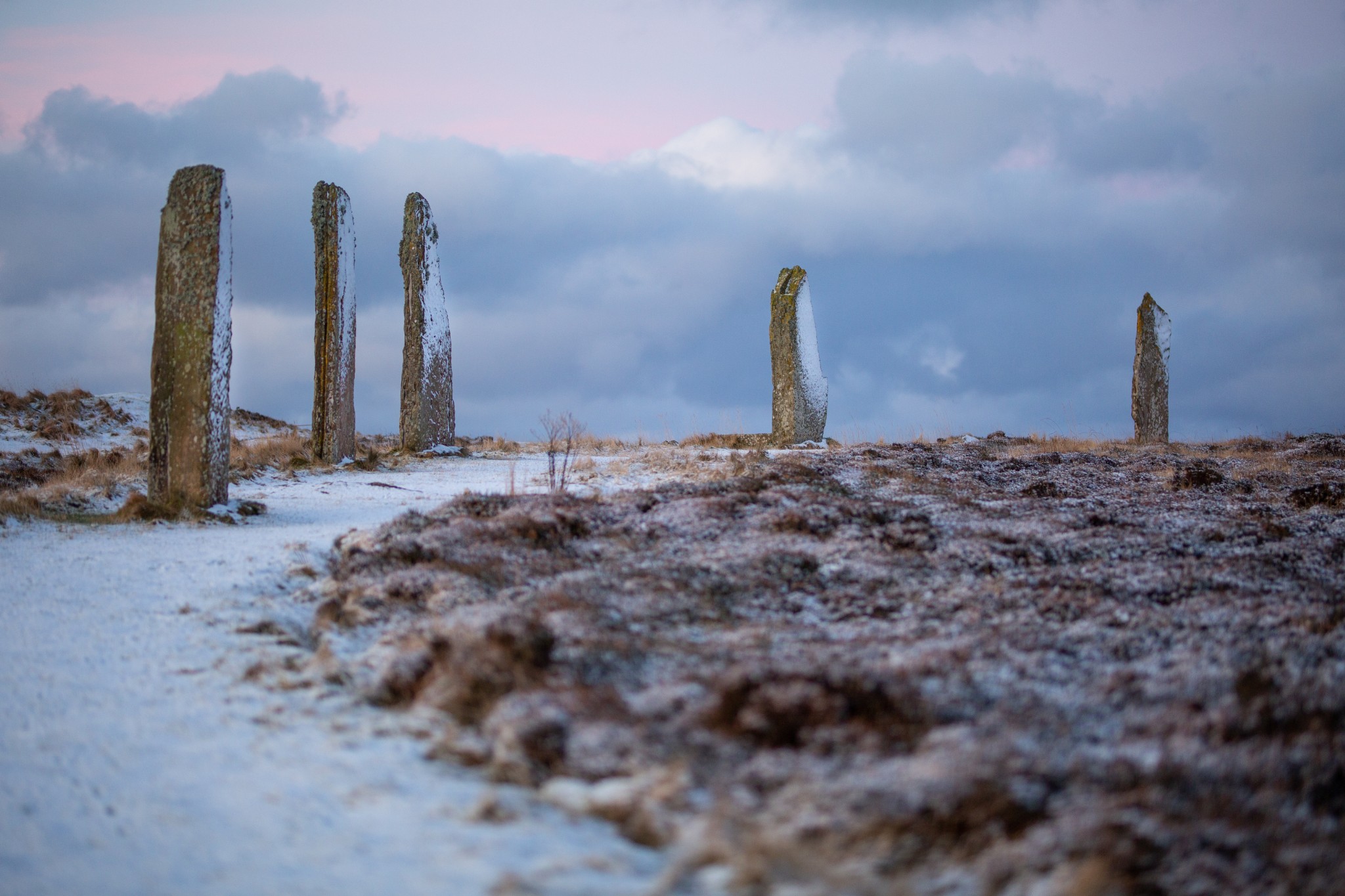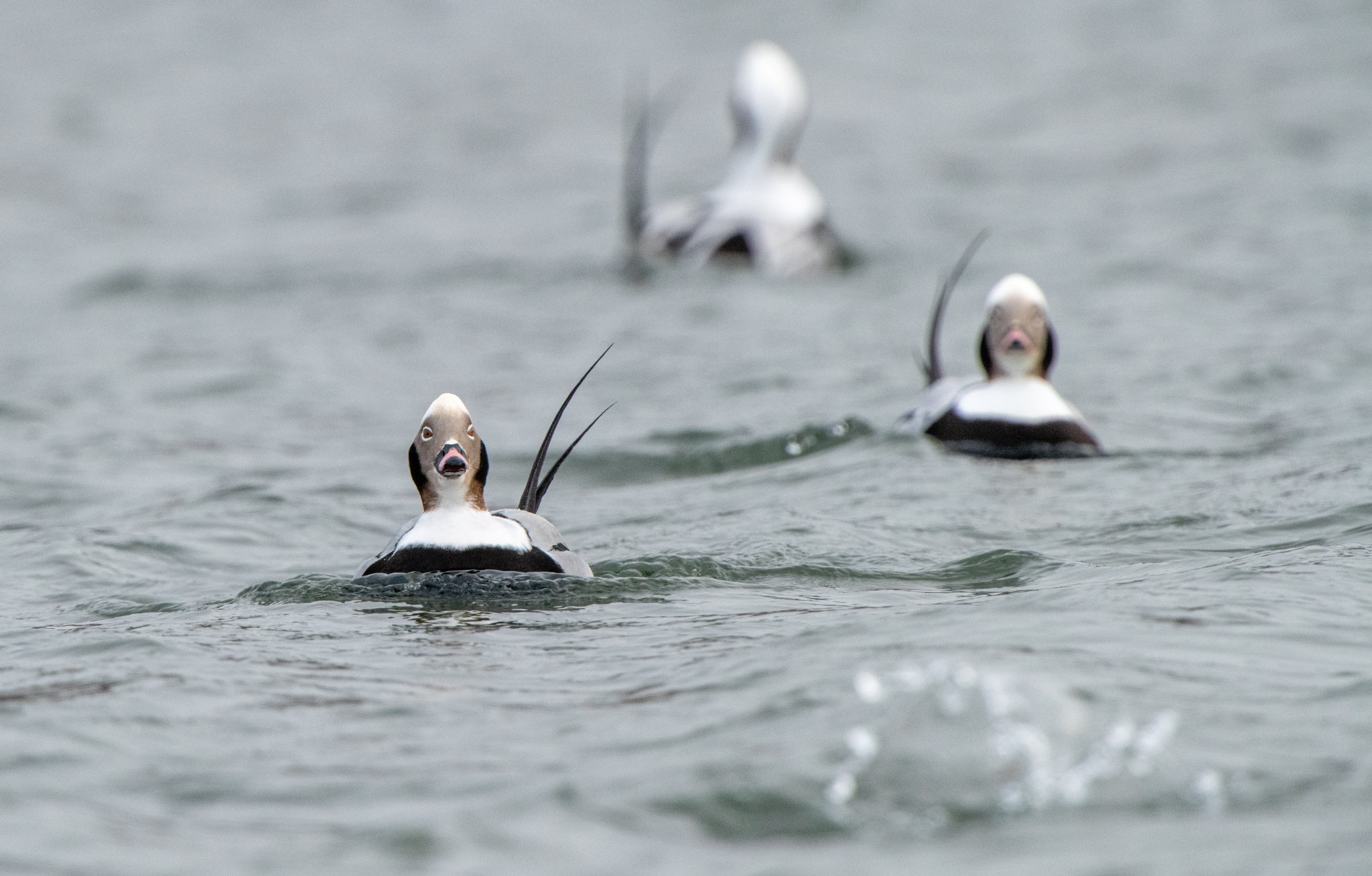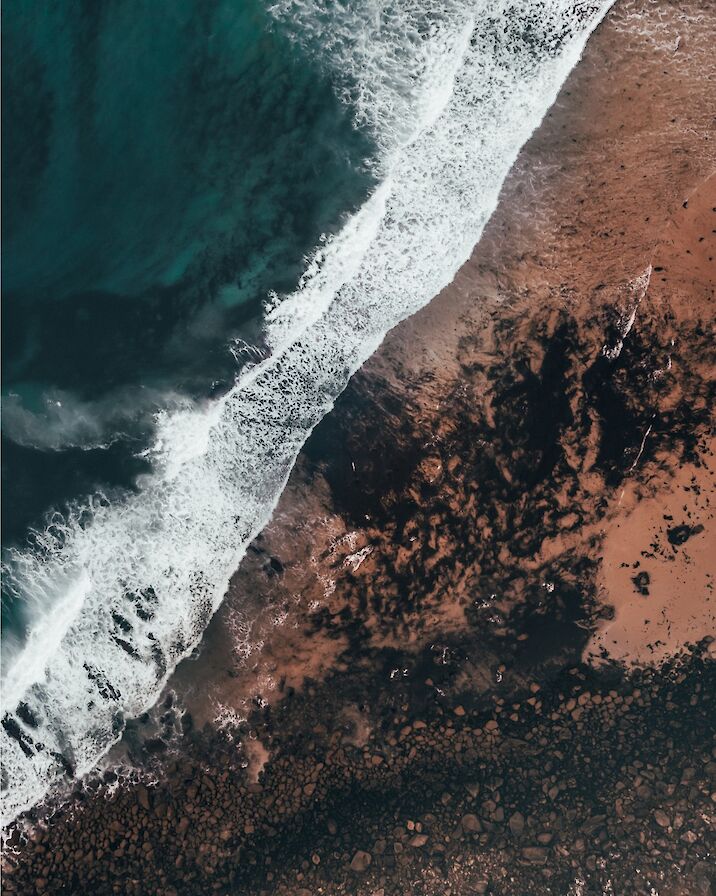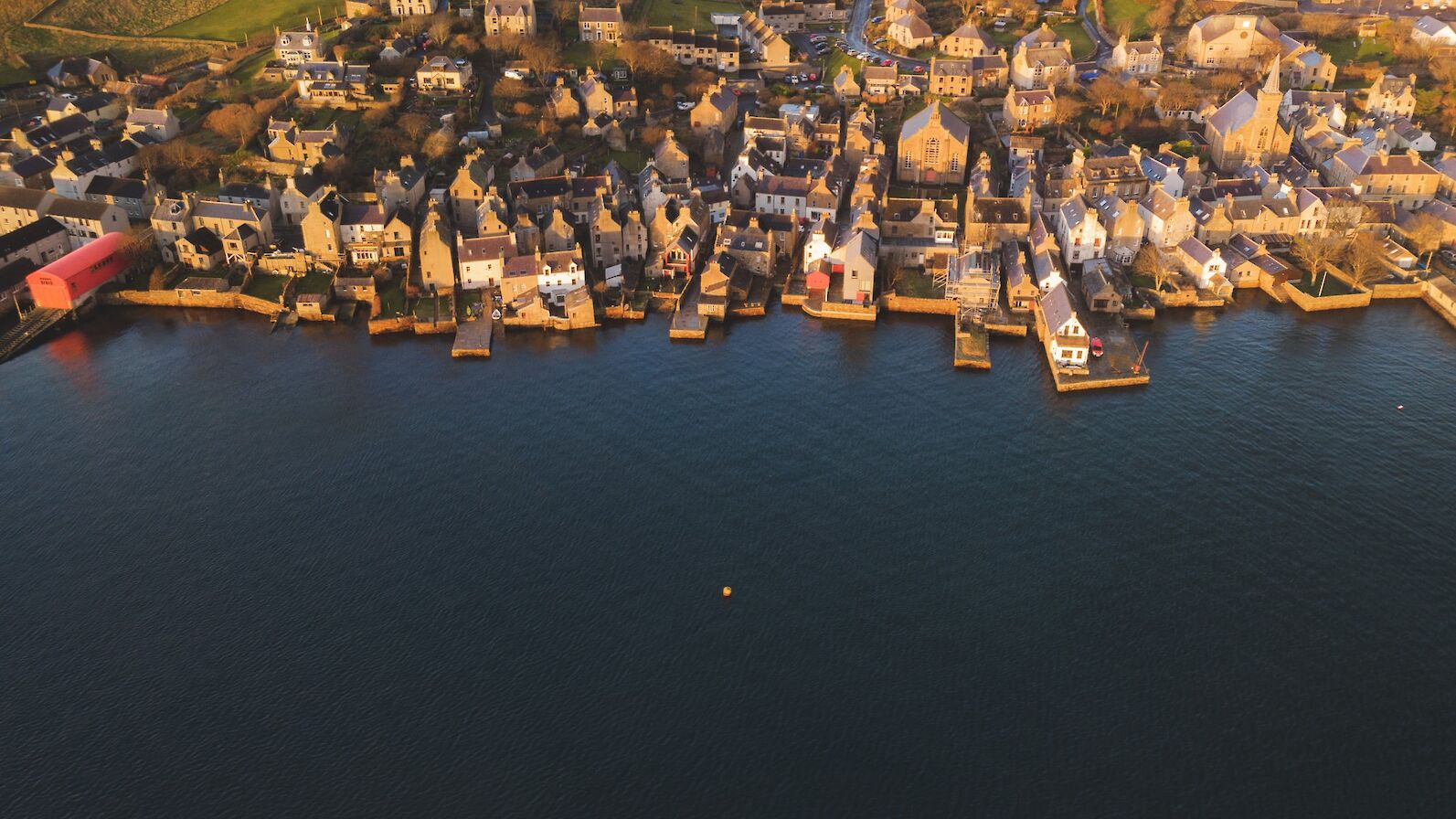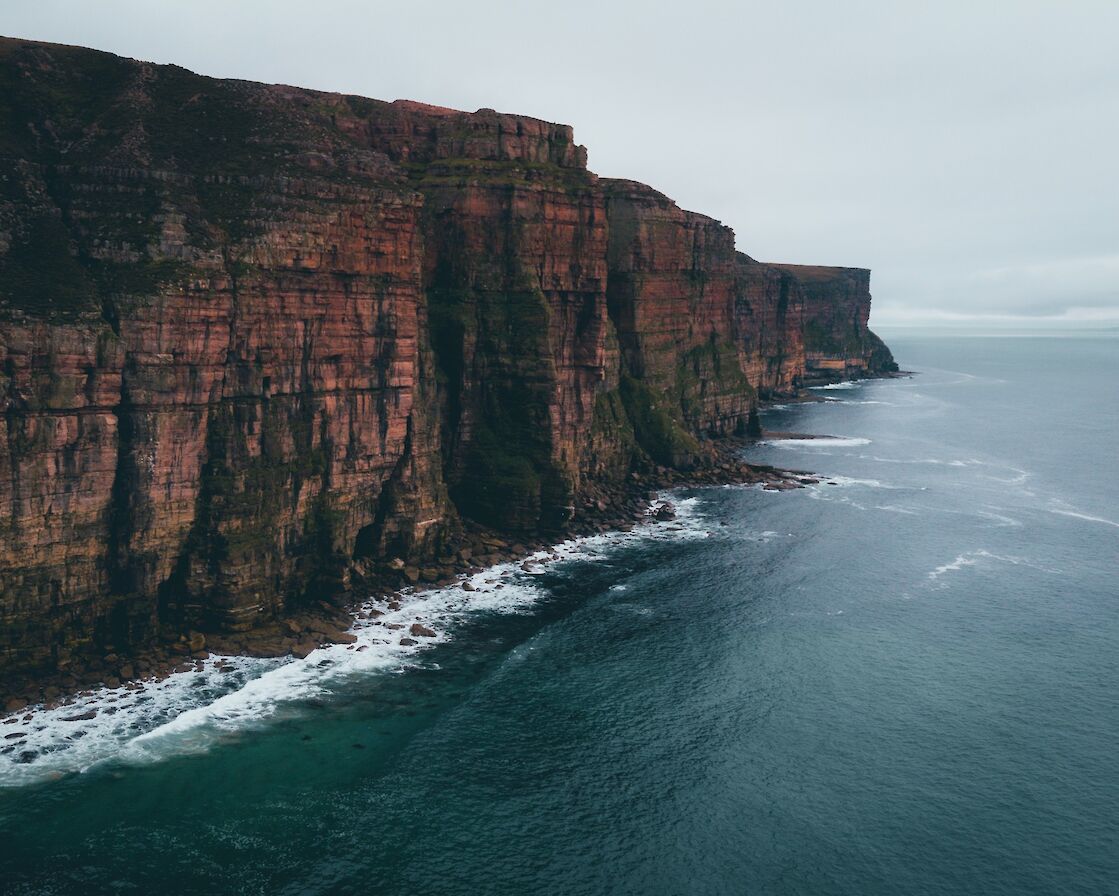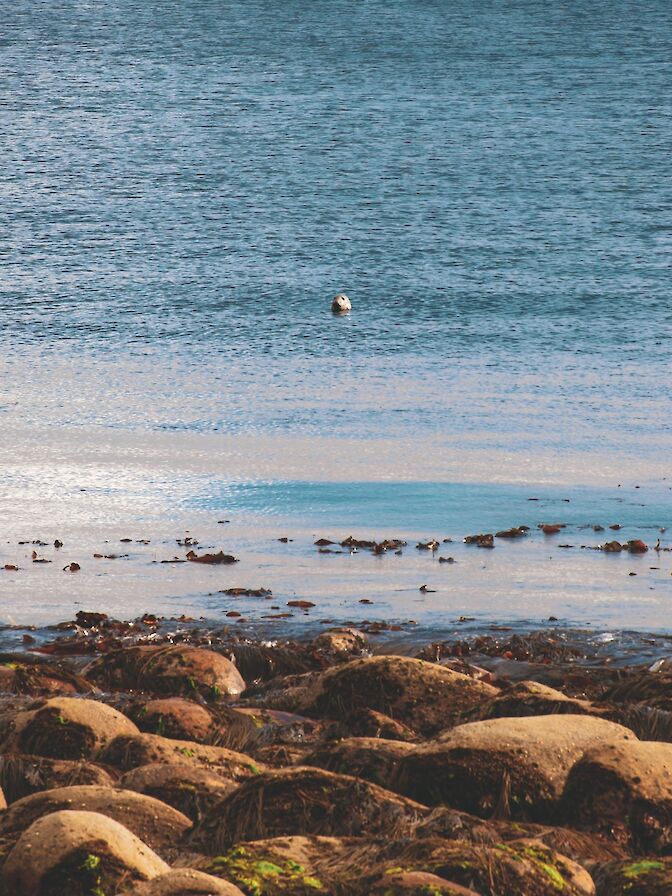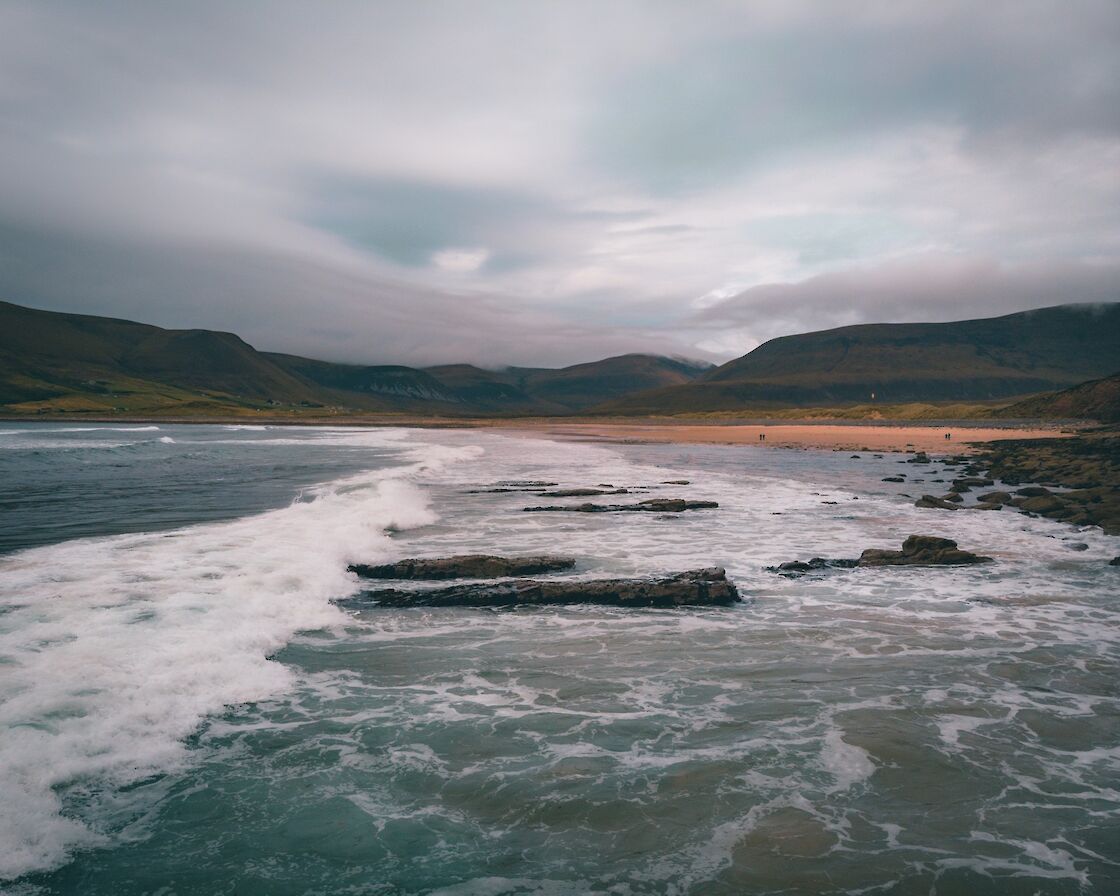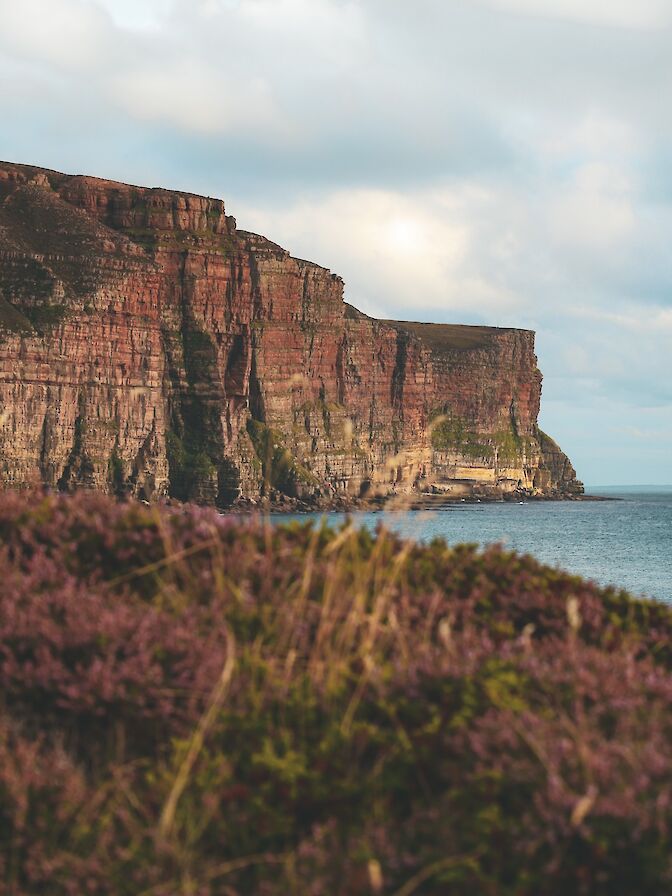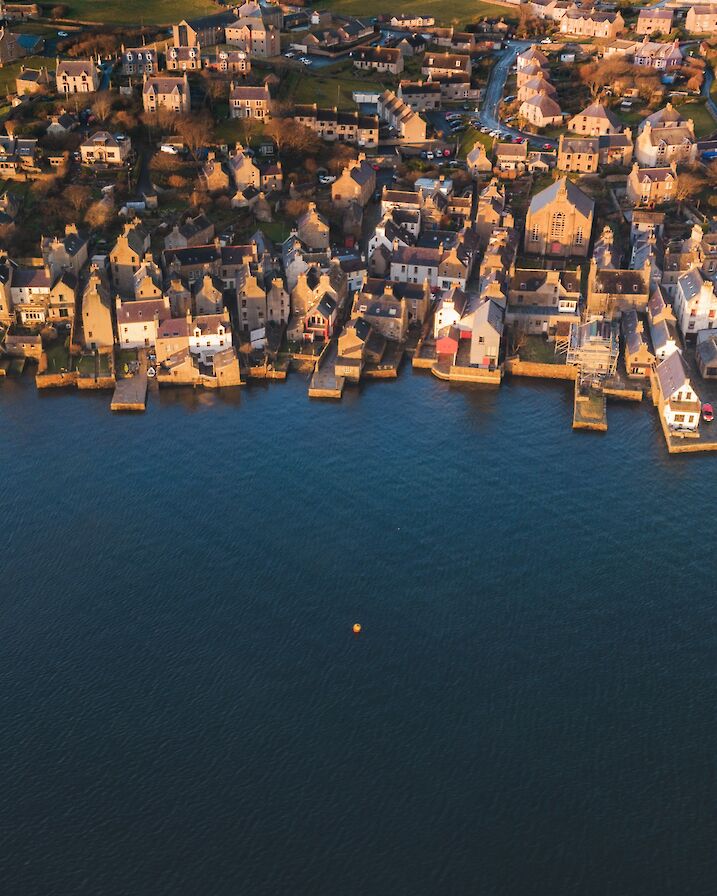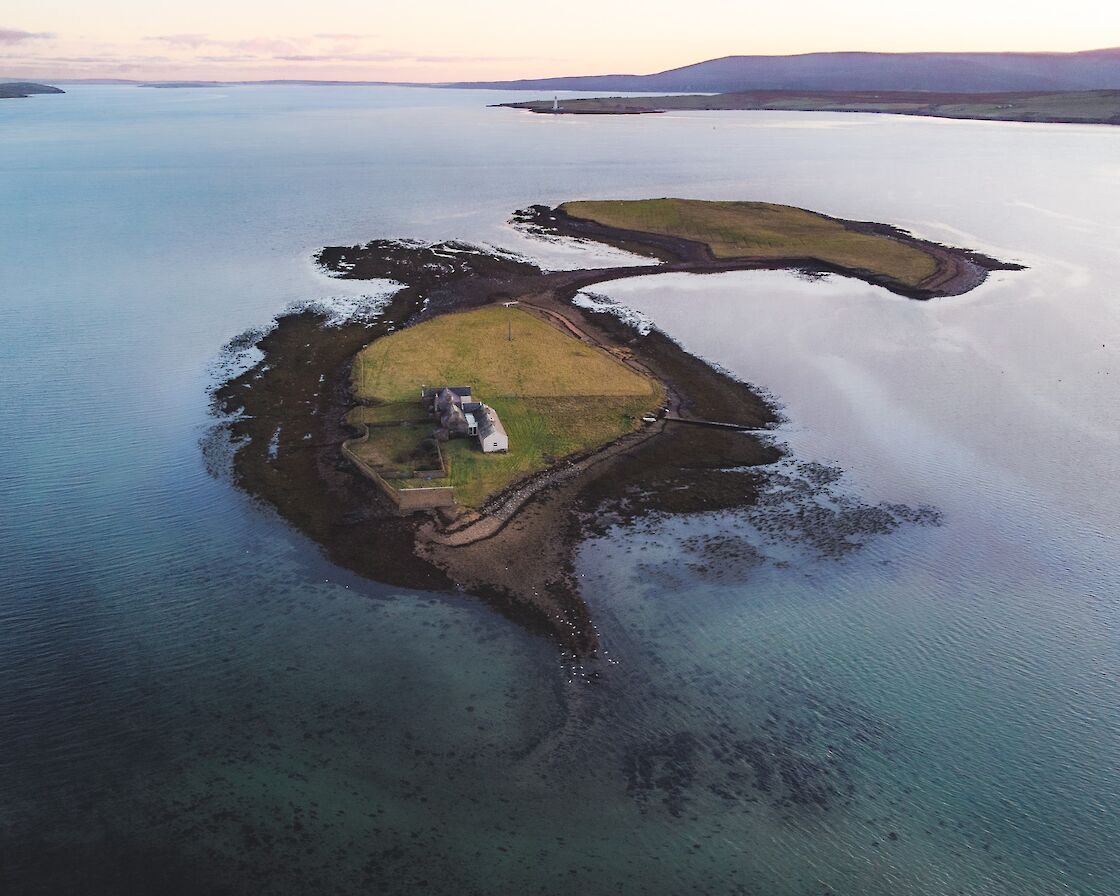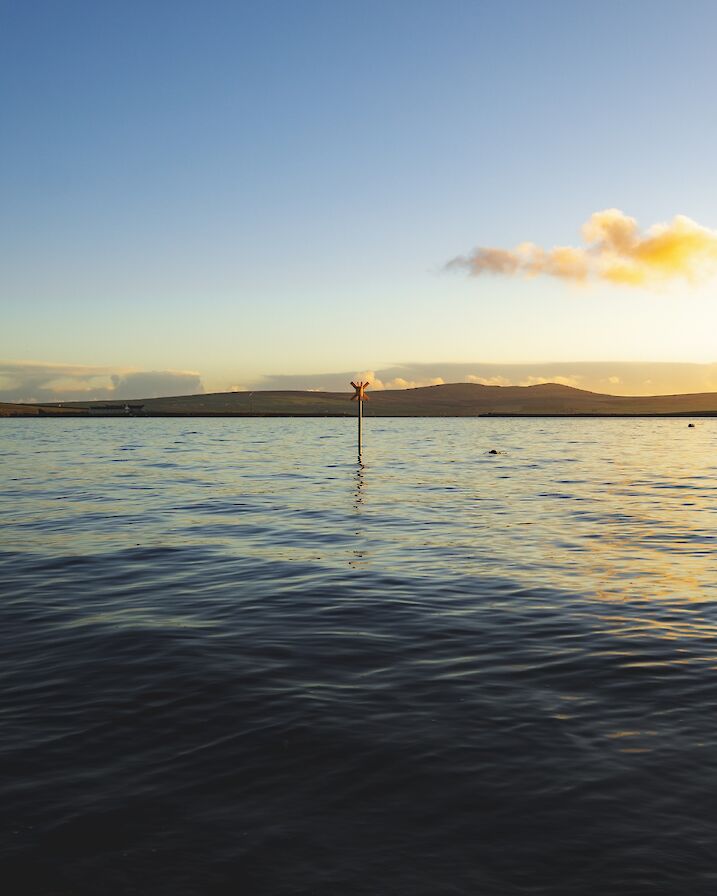Hello and welcome to the February 2021 Newsletter from Orkney.com.
The last few weeks have brought a mixture of stormy, snowy and sunny weather, just exactly what you’d expect here in the islands at this time of year!
Keep reading this month for more on life in Orkney, including some fantastic photography and our regular wildlife watch.
As always, we’d love to hear from you - stay in touch on social media by following the links at the top of the page.
Latest news
Saturday Kitchen surprise for local producers
After a busy Christmas, the last thing local artisan food company Humes Orkney expected was January to bring more of the same. However, a live taste-test of their award-winning smoked mackerel fillets on BBC One’s Saturday Kitchen has led to the family-run business being inundated with orders. The programme’s host, Matt Tebbutt, described the fillets as ‘possibly the best I’ve ever tasted’, with celebrity chefs Cyrus Todiwala and Shauna Froydenlund agreeing, declaring the fish ‘beautiful’ and ‘so good, my favourite’. Owners Ian and Anthea Hume described the reaction as 'instant' and are now working around the clock to keep up with all the extra orders.
Orkney set to become low-carbon aviation test centre
 A pioneering £3.7 million green aviation project that will result in a range of innovative low-carbon aircraft being put through their paces in Orkney is set to take off later this year. The Sustainable Aviation Test Environment initiative will see Kirkwall Airport become the UK’s first operationally-based low-carbon aviation test centre, reflecting Orkney’s global status as a living laboratory for renewables research and development. Aircraft powered by electricity, hydrogen or Sustainable Aviation Fuels will be trialled in the islands.
A pioneering £3.7 million green aviation project that will result in a range of innovative low-carbon aircraft being put through their paces in Orkney is set to take off later this year. The Sustainable Aviation Test Environment initiative will see Kirkwall Airport become the UK’s first operationally-based low-carbon aviation test centre, reflecting Orkney’s global status as a living laboratory for renewables research and development. Aircraft powered by electricity, hydrogen or Sustainable Aviation Fuels will be trialled in the islands.
Meet the makers
 Many of our Creative Trail workshops and studios have been closed since 2020, so we’ve been highlighting our talented community of makers, offering a virtual visit to see them at work. Our latest ‘Introducing Orkney’s Makers’ feature focuses on Nancy Fergus and her Orkney Tweed business. Nancy makes beautiful tweed products with wool from her flock of zwartbles sheep, including cushions, blankets, waistcoats, lampshades and much more.
Many of our Creative Trail workshops and studios have been closed since 2020, so we’ve been highlighting our talented community of makers, offering a virtual visit to see them at work. Our latest ‘Introducing Orkney’s Makers’ feature focuses on Nancy Fergus and her Orkney Tweed business. Nancy makes beautiful tweed products with wool from her flock of zwartbles sheep, including cushions, blankets, waistcoats, lampshades and much more.
Orkney’s renewable stories
 Businesses across Orkney have been embracing renewable energy in recent years, and the last stop in our look at some of these innovative projects takes us to the island of Shapinsay. Orkney Isles Preserves produces delicious jams and chutneys from a converted bothy on a local farm, with much of the electricity provided by a nearby wind turbine. This green energy keeps costs down and allows the small team to focus on expanding their range and reaching more customers.
Businesses across Orkney have been embracing renewable energy in recent years, and the last stop in our look at some of these innovative projects takes us to the island of Shapinsay. Orkney Isles Preserves produces delicious jams and chutneys from a converted bothy on a local farm, with much of the electricity provided by a nearby wind turbine. This green energy keeps costs down and allows the small team to focus on expanding their range and reaching more customers.
Join us on Instagram
 Join us on Instagram where we post plenty of stunning shots from the islands. Make sure you follow Visit Orkney to see new images every week, and you can join in too. Tag your own images and use #VisitOrkney and #LoveOrkney to keep in touch.
Join us on Instagram where we post plenty of stunning shots from the islands. Make sure you follow Visit Orkney to see new images every week, and you can join in too. Tag your own images and use #VisitOrkney and #LoveOrkney to keep in touch.
Wild Orkney
Join Orkney filmmaker Raymond Besant for another look at some of the wildlife highlights across the islands.
I’ve recently rediscovered a wonderful resource for wildlife right in the heart of Kirkwall, the Peedie Sea. Admittedly this has been from walking my dog Lyra rather than purposefully seeking out wildlife, but I’ve started looking at it in a new light.
The Peedie Sea is a series of small water bodies fringed by the Kirkwall Power Station and Police Station on one side, a skatepark and supermarket-lined road on the other and a busy road on its seaward side. It hardly sounds glamorous does it?
Most of us drive past on our way shopping and may notice the preening mute swans or squabbling gulls but there is so much to look at by taking a gentle walk around the pools.
The Peedie Sea is very shallow and perfect for one group of birds in particular - ducks! Granted, driving past or from a distance one duck looks much like another but give yourself the best chance of identifying and enjoying them by getting the light behind you. This might sound obvious but at this time of the year with the sun predominantly in the south east you can spend a lot of time squinting into the sun from the north side of the Peedie Sea.
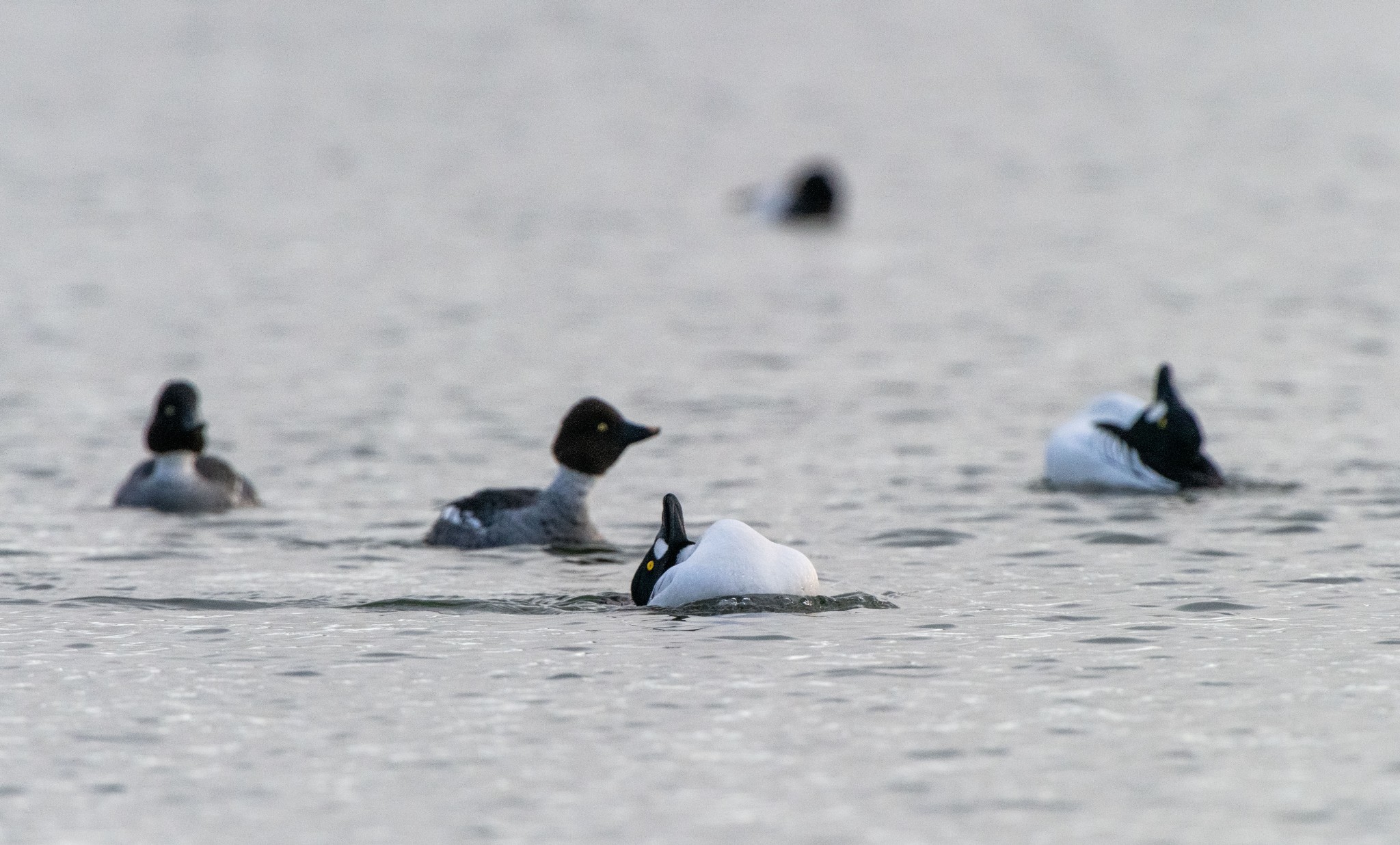
Even over the noise of the nearby traffic you’ll start getting audio clues as to which species are present. Can you hear a whistling noise? It’s thin, but unmistakable. This is one of my favourite sounds of the winter, commonly heard around the coast of Orkney from ducks dabbling amongst the seaweed. It comes from the male wigeon. This is only anecdotal but I don’t remember the Peedie Sea ever having regular flocks of wigeon on it, but they are certainly there now.
There is joy to be had in the thought that they’ve discovered this place as a safe haven. Wigeon in other settings are often difficult to get close to and so this affords the perfect opportunity to observe their beautiful plumage at close quarters. They have a silver back, white stomach, pink breast, chestnut head and yellow forehead. Those colours shouldn’t work together, but somehow, they do. A flock of around 20 to 30 of these birds can be seen at the moment. If you’re lucky you’ll see them graze the grass around the paths but I’ve only seen this during rough weather.
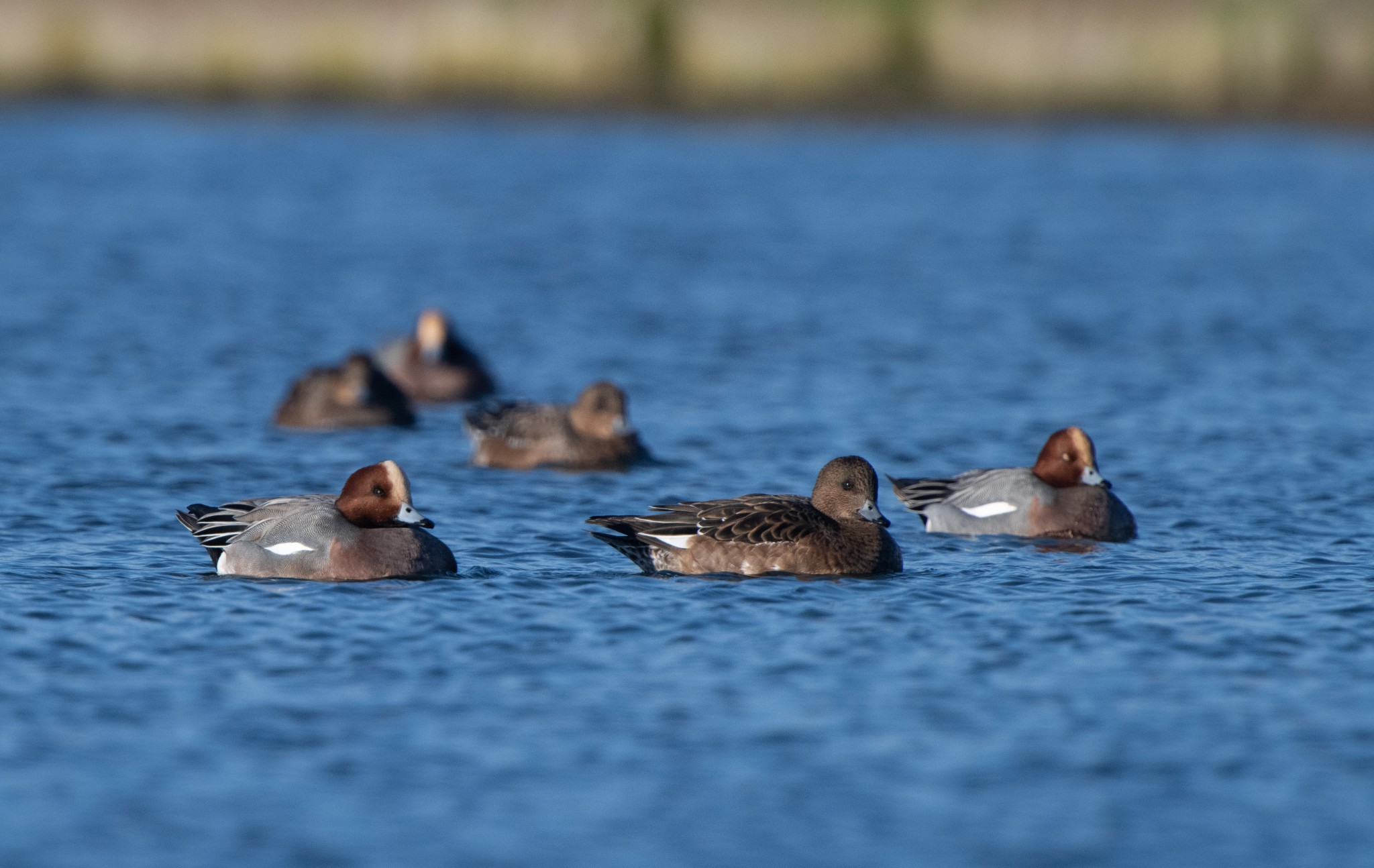
But there are also some proper dandies on this pond! For sheer beauty in simplicity the male goldeneye is hard to beat. Never found in big numbers these ducks are still widespread throughout Orkney during the winter months. The male has a predominantly white underbody and a black back with striping, but the best way to identify it is by its triangular shaped head (this will become obvious when you see it!) which is a wonderful deep green colour in the right light, complete with large white spot next to its bill and, of course, the reason for its name, its golden eye. It’s hard to believe but most of these goldeneyes started life in the hollow of a tree before jumping out to the forest floor below. Small numbers breed in Scotland but ‘our’ birds come from Scandinavia and Russia
They are beautiful for sure, but in this calm cold weather we are having the males can be seen indulging in some early displays. It’s extravagant and guaranteed to bring a smile to your face. With a smaller brown female by his side, I watched one as he threw his head back so far that it was almost flat with the rest of his body. He flung it forward and upright so his bill faced the sky before doing an almost indescribable ‘body-bop’ pushing his bum up and out and his head at a 45-degree angle. I can’t do it justice by typing, just go and see it!
Vying for the top spot in the league of Peedie Sea duck dandies is the long-tailed duck. I’m never quite sure whether to think of them as resident birds that are here through the winter or as visitors that just happen to leave for the summer. Breeding in the high Arctic, they arrive here in October and only leave again during May. The highest numbers of long tailed ducks will be on the Peedie Sea in April and early May but by then they will have changed into their summer plumage of dark cocoa and hazel. Now is the perfect time to see the male in his crisp white livery, dark face patch and of course, long tail.
These ducks are displaying now too but it’s somewhat more frenetic. Wait for an individual or small group to fly in fresh from Kirkwall bay and belly flop into a group already there. The calling really starts, the ‘calloo’ as we call it has an amazing yodelling call. Other males perk up, they start swimming faster, heads and tails in the air before imitating that ‘body-pop’ of the Goldeneye. The smaller but equally beautiful female birds lack the long tail and often avoid the commotion by disappearing under the water!
As if a bird could be any prettier look out too for the subtle pink colouration of the male’s bill. After all this male posturing and excitement, it’s worth focusing on some of the other species here and it tells us a little about the Peedie Sea itself. Small groups of tufted ducks can be found and, like many of our ducks, it breeds here in smaller numbers with its ranks swollen by birds from northern Europe in winter. The male is predominantly black with a white flank, sporting its characteristic tuft on the back of its head. Like the Goldeneye, whose head changes colour in the right light conditions, the head of the male tufted duck turns a wonderful deep purple. The female is a more uniform brown with a smaller tuft.
The tufted duck, long-tailed duck and goldeneye are all ‘diving’ ducks as opposed to the wigeon which are dabbling ducks, feeding predominantly on the surface of the water. But not all diving ducks have the same diving technique. Of the three, the goldeneye has the most standard dive. You can tell when the long-tailed duck is about to dive as it almost flattens its body a little - almost as if it’s proclaiming ‘right everybody, I’m about to dive!’ It arches its head back and propels itself underwater, you don’t see it but there must be a last-minute thrust with its webbed feet to get it under the surface as the energy carries on out through the long tail in a last flick before it disappears. It’s on the lookout for small crustaceans and creatures to feed on and will be back in view after about 15 seconds.
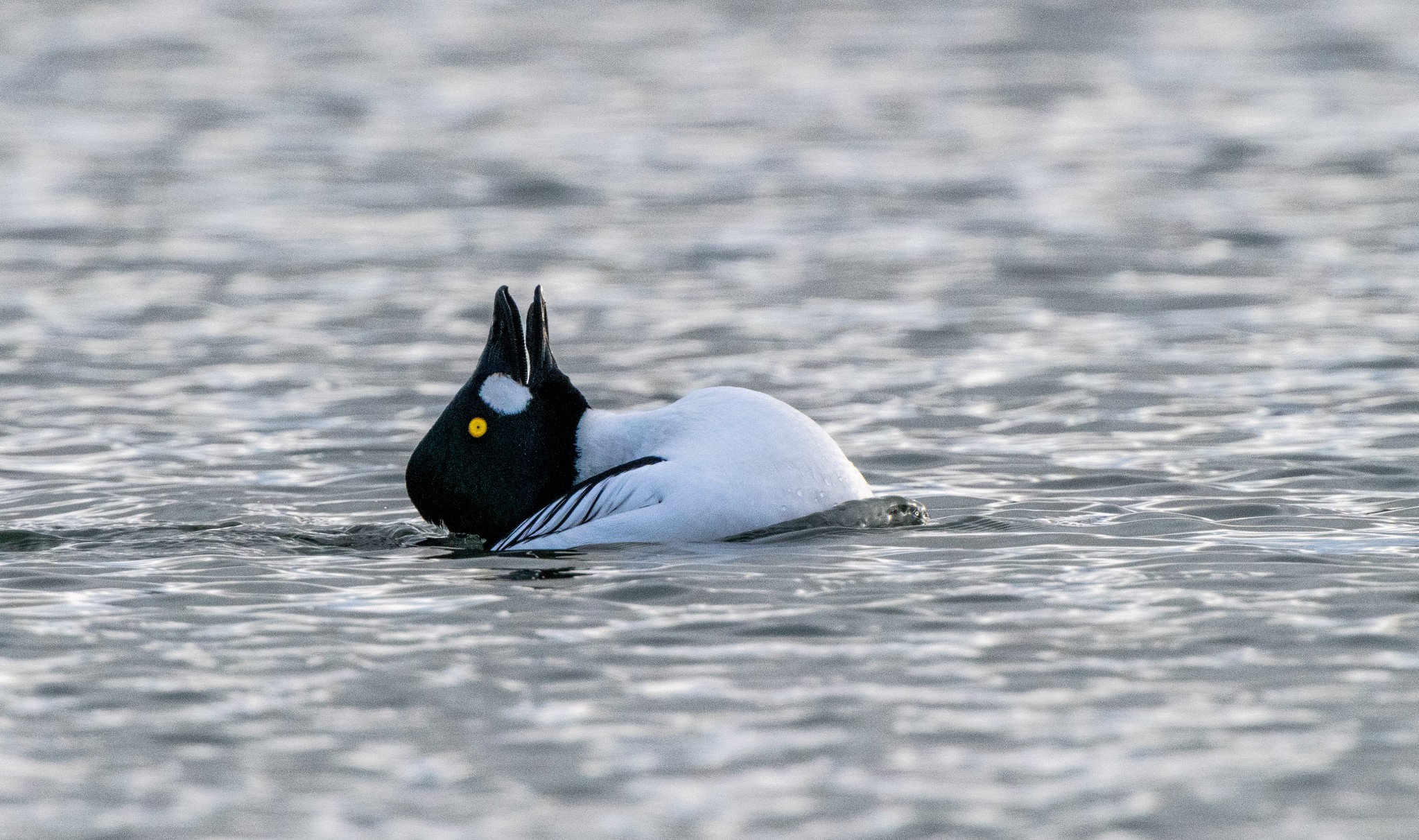
The tufted duck on the other hand almost looks like it’s too buoyant to even get under the water. It does a proper leap in the air and on its return to the surface it bobs up like the bubble float on a fishing rod.
Our smallest duck, the teal, can sometimes be seen on fringes here and very occasionally a shoveler duck with its massive bill will put in an appearance. But, let’s not overlook one of our commonest ducks, and in my opinion one of the most beautiful, the mallard. They favour the Police Station corner and are often found resting there. I sometimes feel like I’m talking down the female ducks because the plumage of the males is so extrovert but they are duller in comparison for a reason, they need to stay camouflaged when nesting and rearing young.
Can there be a more beautifully intense colour in Orkney’s natural world than the head of the male mallard? It has a deep emerald green complemented by that banana yellow bill. Perfection.
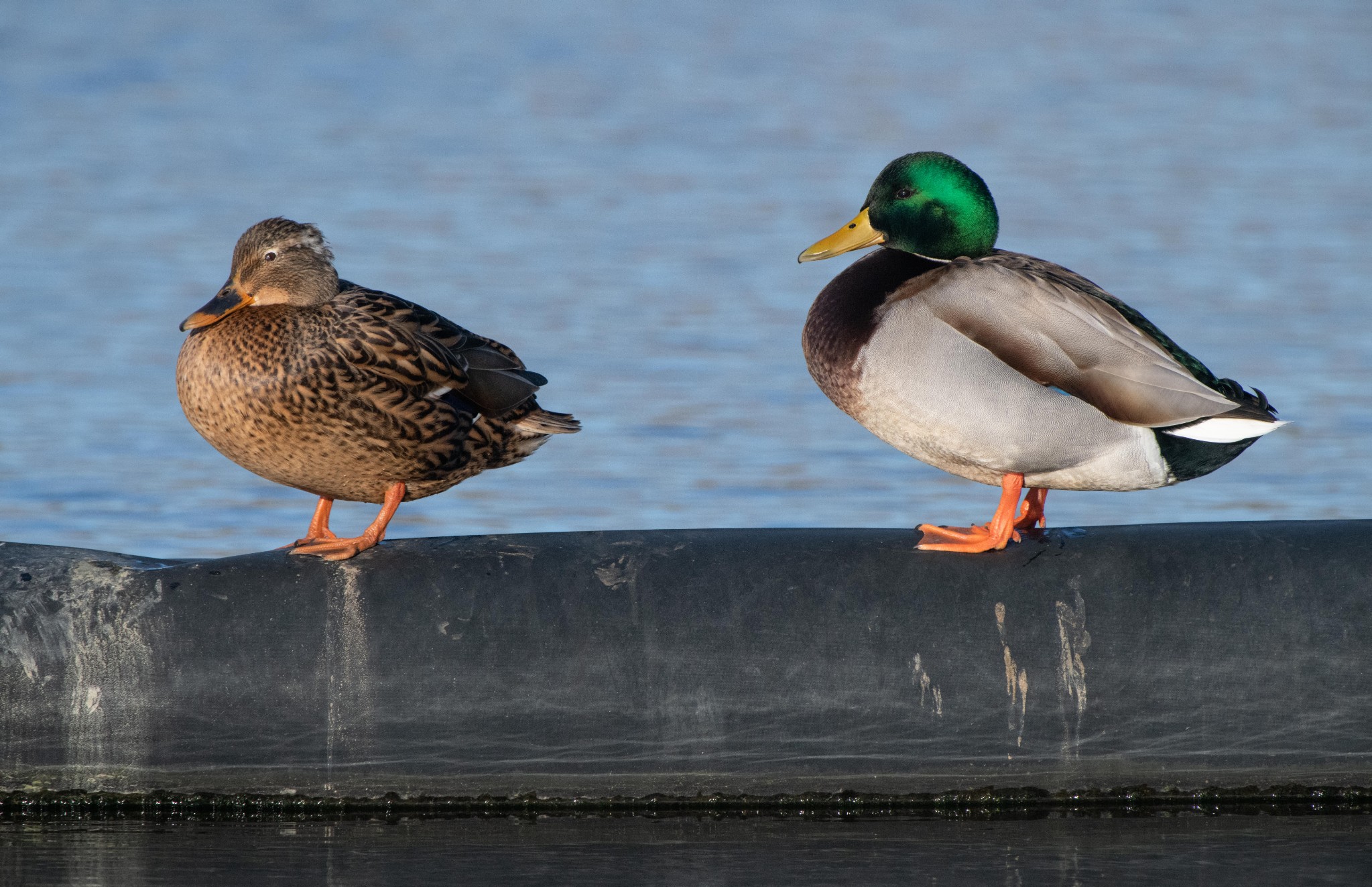
If you haven't had your duck fix by now then hop across the road and walk out towards the Hatston slip where you have an excellent chance of seeing our biggest sea duck, the eider.
The Peedie Sea has more to offer than ducks however. Its proximity to the sea means waders commonly frequent it, often resting on the walkway between the two main pools. Look out for turnstone, ringed plover, oystercatcher and the occasional curlew. If the central path is full of resting gulls, mute swans and waders, you’ll be doing them a favour by taking the long way around but that’s no bad thing, it just provides more time to admire the ducks.
I’m glad I rediscovered it. It’s accessible for everyone and perfect for a stroll during these times of COVID-19. I’ll be taking both my dog and my binoculars from now on.
Find out more about Raymond’s work via his official website. You can also find him on Facebook, Twitter and Instagram.
His new book, 'Naturally Orkney Volume 2' is out now, focusing on Orkney's coastline and all the sights and species that can be found there. You can order your copy online.
Focus on photography
The latest talented local photographer to share some of their images with us is Ally Velzian.
My love for photography actually started whilst on a summer holiday to Hoy when I was around eleven years old. Until then, I was keen on filmmaking and capturing travels using a Sony camcorder, but on this occasion, I became fascinated with the manual process of taking stills. A week-long stay in our family cottage which sits on Greenhill, overlooking the Rackwick Bay, made for the perfect location to experiment with an old Canon DSLR. Hoy remains my favourite place to do photography with the stunning cliffs, everchanging weather and light making the process even more engaging and unique each time you set out to explore. The opportunity for landscapes and wildlife photography are in abundance all across Orkney, but Rackwick is a hidden gem which has to be seen.
I have been fortunate to use various high-end Canon, Sony and Fujifilm cameras, my favourites being the 5d mkiv and A7Siii. However, I have always enjoyed the simplicity and portability of smaller mirrorless cameras, so I use the Sony A6000 with the kit lens and a Sigma 19mm prime for the majority of my photos. For aerial photography, I have stayed with the original DJI Mavic Air, which is a few years old now, but still a very capable drone. Most of my photography is now focussed towards capturing aerial images, but I always try to shoot multiple perspectives from the ground and the air.
I seem to have been really lucky with the weather during my last few travels home to Orkney, getting to shoot perfect sunrises over Stromness with next to no wind or rain was the highlight of my trip, but definitely a rare opportunity! Orkney has so much to offer photographers and visitors with its incredible history, Neolithic sites, wildlife, and idyllic seaside towns. Although I am yet to venture and explore more, the stunning coastal formations around Hoy and narrow streets of Stromness are definitely what makes Orkney special to me.
Feel free to follow my photography account on Instagram. I am excited to launch an official website in the coming weeks, where prints and commercial work will soon be available.
And finally...
Thank you for taking the time to read our latest newsletter. Hopefully it has helped keep Orkney in your minds until you can visit us once again.
We’re always keen to hear from you too - share your news, views and comments on the newsletter, Orkney.com and your Orkney experiences with us on Facebook, Twitter, Instagram or E-mail.
In the meantime, it's cheerio from Orkney for now.
The Promoting Orkney project has been part financed by the Scottish Government and the European Community Orkney LEADER 2014-2020 Programme.
